Have you ever gone out to the mall for the day and come back with a new decorative item for your home — like a vase, picture frame or tchotchke — and been less excited than you were when you were in the store?
What looked so unique and fresh on the shelf just doesn’t go with the rest of your decor, so you tuck it away in the corner and move on.
This is sort of what happens with software at enterprise organizations. Individuals buy software to solve urgent problems, realize that it wasn’t a good long-term fit, and it’s forgotten about or only used once in a great while.
Either way, it poses a big job for IT teams, who are tasked with keeping track of hundreds, or even thousands of apps at a time.
This process is called applications portfolio management (APM). In this article, we’ll dive into what exactly that means, why it’s critical, and how you can get started today.
What is application portfolio management?
Application portfolio management is the practice of keeping track of all software applications purchased and used within your organization, for the purpose of optimizing your overall tech stack.
It’s most often performed by information technology (IT) teams who must be aware of all applications in order to make sure that all software is secure, compliant, integrated, updated, and used to its fullest potential — or even let go of if needed.
Did you know that monday.com is a Work OS (operating system) that supports teams in their APM processes?
Not only do IT teams use it to manage their full portfolio of applications, but it can replace a host of others, integrate with many, and consolidate business management.
monday.com’s high-level project template can be used as a foundation to keep track of software that needs to be assessed. 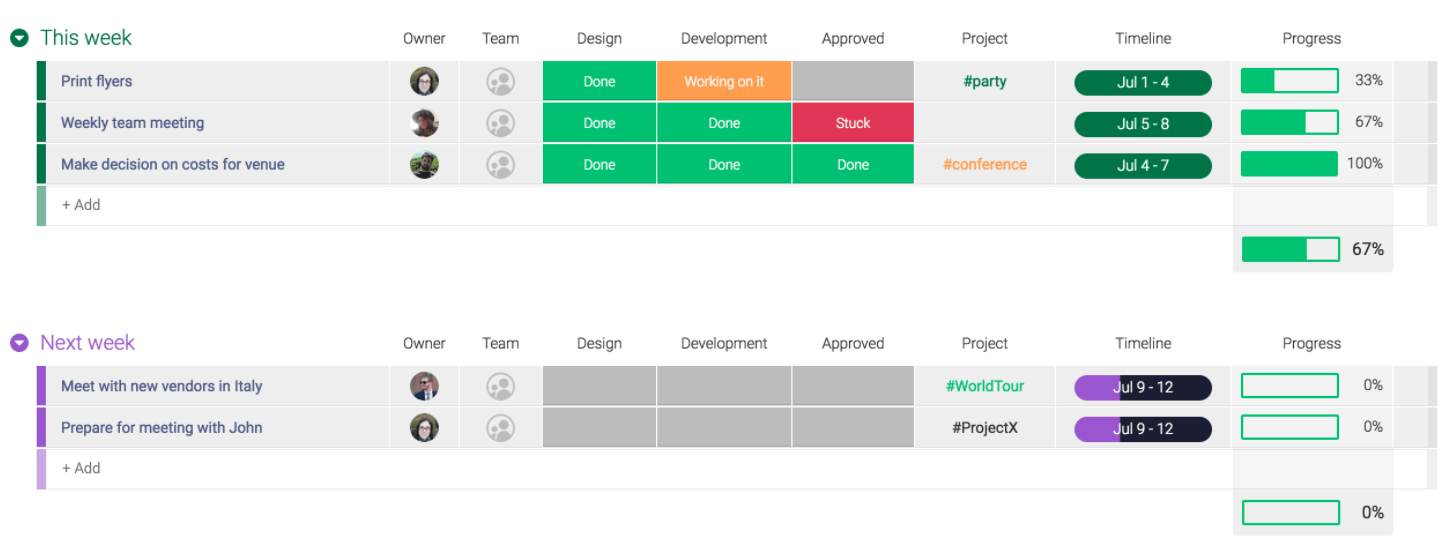
Rows can be adapted to organize different applications, whereas columns like “design,” “development,” and “approved” can be adapted to track things like usage, cost, and potential redundancies.
What are the benefits of application portfolio management?
The right tool can make a huge impact on a team’s productivity, but applications also come at a cost. If you’re working with one, you want it to be impactful, used to its fullest potential, and to not be redundant with other tools that you’re already paying for.Sadly, redundancies happen more frequently than you would think.
For example, imagine an organization where the engineering team used monday.com to manage their feature backlog and sprint planning, while on the other side of the office, the marketing team recently purchased a different system to manage design tasks.
This was a redundant purchase — the marketing team could have instead expanded upon the engineering team’s current monday.com package to use less resources and gain a much more advanced project management tool.
This type of move is called application rationalization, and it can save organizations a lot of money. In fact, it can lead to cost-savings of more than $2 million in a single enterprise.
But APM isn’t always used to find out which tools are redundant. It can also identify gaps within an organization and determine where applications can be useful to increase productivity.
Using monday.com, IT teams can build an APM gap analysis on top of our OS using the gap analysis template.
Collect different applications in rows and use columns to determine the application budget owner, it’s features, the contract renewal date, it’s importance within the team, and more.
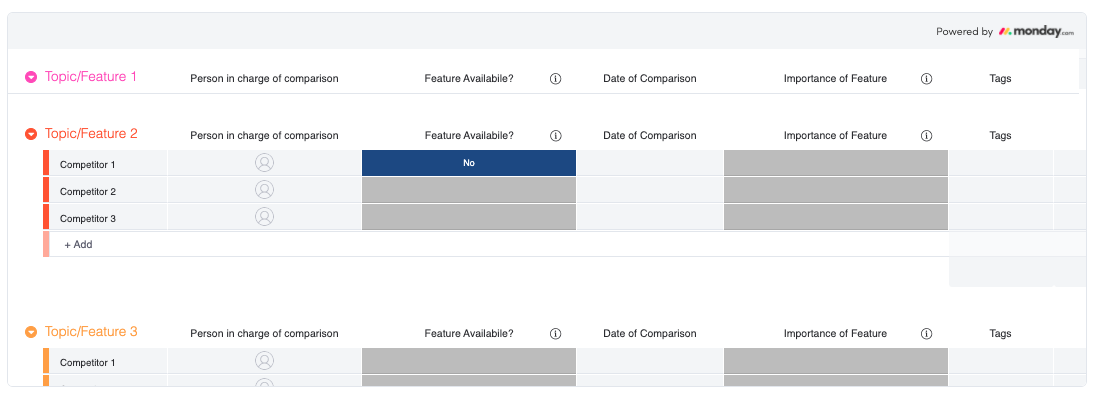
You’re also automatically set up to collect relevant files, establish a desired state, and note any action items.
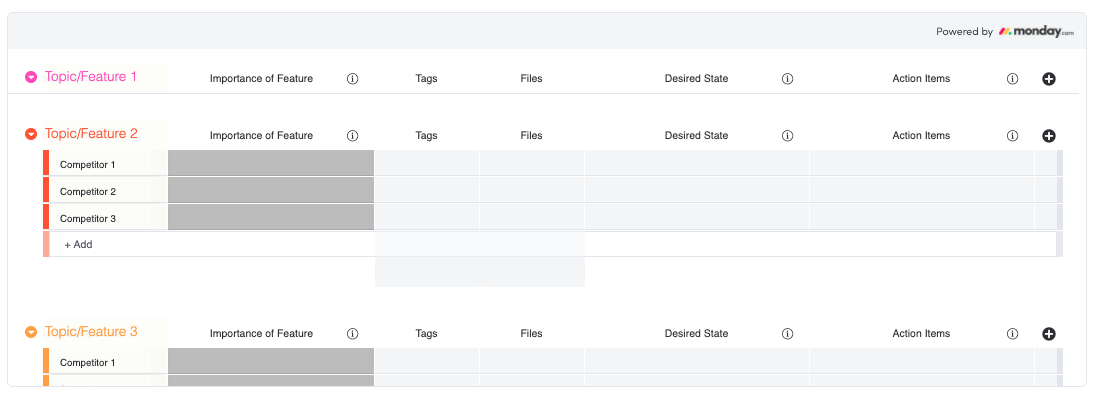
Finally, APM is also used often to ensure that organizations stay compliant. Keeping a weather eye on your tech stack allows IT teams to spot entry points for potential security risks and mitigate them before they’re a problem.
What is the application portfolio management process?
APM requires the collection of a lot of data and information, facetime with application and budget owners, analysis, and a solid plan for swift action should it be needed.
Let’s go through the process step-by-step.
Compile a list of applications from every department.
This is where the legwork comes in — meet with budget owners to find every application they’re using (or subscribed to, and not using).
At this stage, you might also want to collect contracts if they exist, as well as the cost of each tool in order to determine what’s up for renewal and how much each application is costing your organization.
Identify the application owners.
Find and record the budget owner of each tool and talk with them about the APM process.
Let them know you’re looking to analyze the use of applications across the organization and that you’re there in the name of productivity, security, and compliance.
Identify the application’s lifecycle.
The lifecycle stage of an application is defined depending on how it’s currently being used.
The different stages are as follows:
- Supported: this application is actively being used by a team, and is being used to its fullest potential or is on it’s way to that state.
- In phase out: this tool is still partially active but in the process of being phased out. In this case, there may be redundancies with another tool that’s in the process of onboarding.
- Not supported: this application has been phased out already, or isn’t at all active and has been abandoned. A scenario in which this might happen is when software is purchased for a full cycle — such as a year-long contract — but doesn’t meet needs, so the renewal is cancelled and the tool is abandoned until that date.
Identify and understand how applications are used.
If a tool is integral to the workflow of a team, you’ll want to take that into consideration during the APM process. If it’s a nice-to-have tool that’s used once a month, that’s also something you’ll want to note.
How can you support the application portfolio management process?
Up until now, we haven’t taken any action in our APM process — we’ve only collected information, data and raised awareness with budget owners.
These stages can be supported with monday.com’s root cause analysis template, which can be adapted using the monday.com Work OS for IT teams to set themselves up for success.
Here’s a simple example of how an IT team might use this template to collect information on a tool and how it’s used.
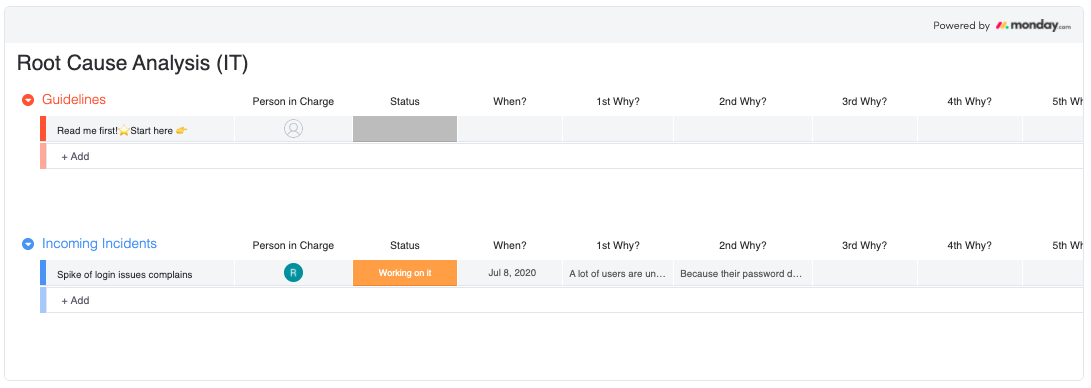
A closer look at additional columns reveals how the template can be used to note whether or not applications might need to be reviewed or are redundant with other tools.
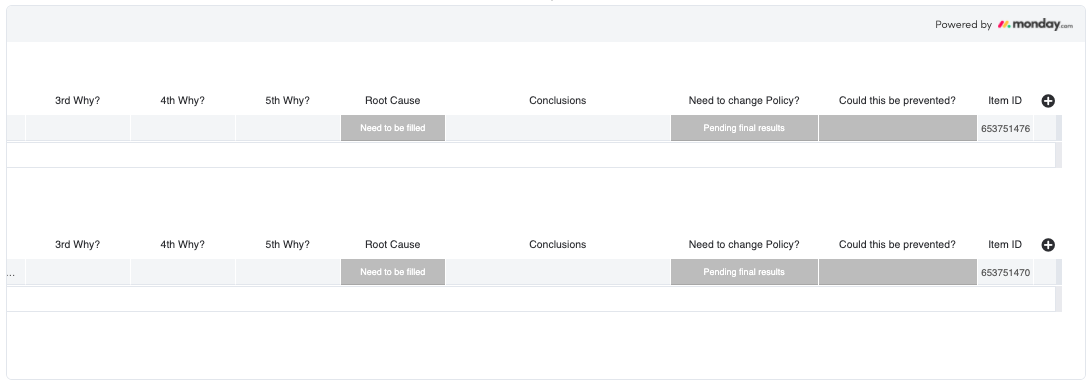
Establish business value, quality, and cost.
At this stage, you’ll need to quantify just how valuable an application is to the organization across the board and compare that to the cost of keeping it.
Create an application architecture framework.
It’s best practice to define what a successful application looks like for your organization, and then determine during the APM process how well each application fits within your organization’s definition of success.
Map the total application landscape back to IT.
The IT department should be the nucleus that connects all applications.
In this stage, you’ll want to unite applications under one business domain, assess compliance, and make any updates necessary so that your organization’s data stays secure.
Review application rationalization concerns.
This is where you get rid of potentially redundant applications or stop new ones in their tracks.
For example, in our previous example, if the IT department had known the marketing team was looking into another platform to manage design tasks, they might have suggested expanding on the engineering team’s monday.com subscription as a better solution.
Ideally, this process is continuous, and once initially established, all applications — both new and old — are regularly reviewed by the IT team so that the organization runs at optimal efficiency.
Use monday.com to power your applications portfolio management
Aside from the fact that we can probably replace a lot of your project management tools, we think that our Work OS is the best solution for IT teams to use when supporting their APM processes.
It’s built on a foundation of features that make managing any business process much smoother. This platform can also support managers in their ongoing quest to make better business decisions.
First off, everything is all in one place. Data, files like application contracts, communications, owners, and more are all live under one roof.
Here’s an example of how that might look in a live task.
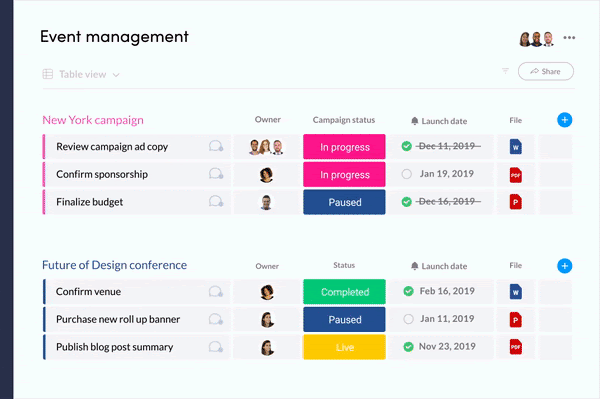
Notifications and workflow updates are automated.
So, say you’re waiting on another member of the IT team to finish assessing one application before you move on with your analysis.
You can be automatically notified immediately after he or she completes the task in monday.com.
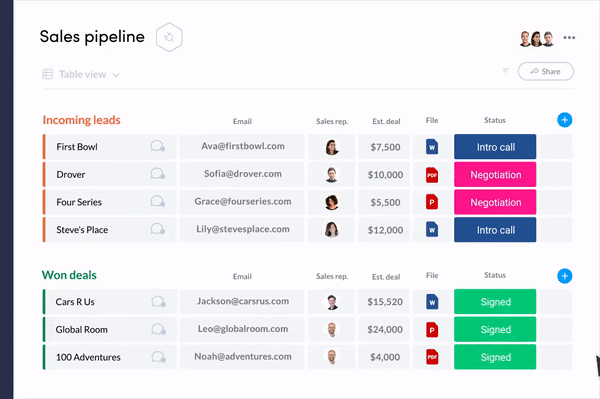
We don’t all process information or workflows in the same way.
In the monday.com Work OS, anyone can view any project in whichever view is the most comfortable for them — table, Gantt Chart, Kanban Board, timeline, or more — you name it.
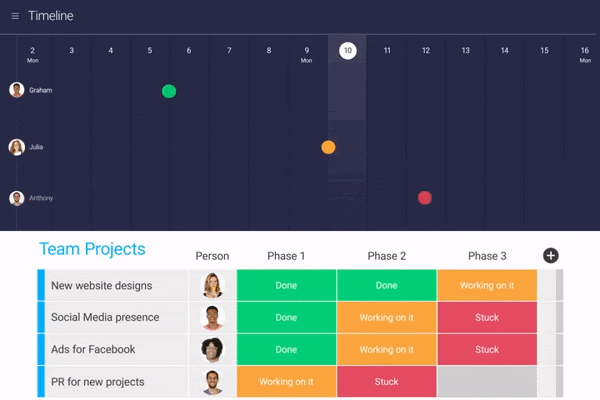
We also don’t expect for our tool to exist in a silo.
monday.com integrates with the other tools you’re already working with so that the flow of information and data stays seamless.

Last but not least, we have over 200 templates to choose from for various teams across all departments, so that no project manager ever has to start building a workflow from scratch.
Our unique user interface (UI) is beautiful and easy to use. Your team will be excited to login everyday and get to work.
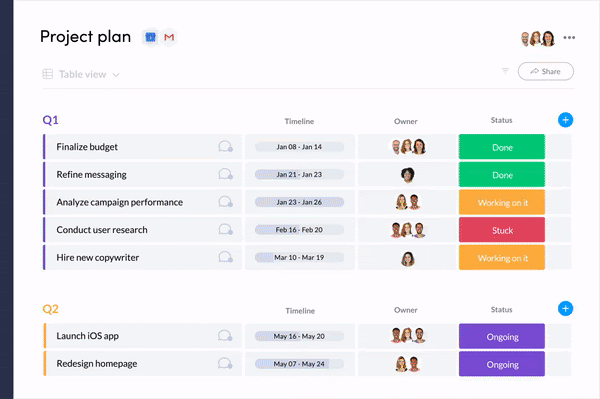
Get started managing your applications portfolio
Your organization could be bleeding budget using redundant or outdated software — not to mention every additional application opens up another possibility to breach security or compliance.
APM ensures that you’re not paying for applications that aren’t doing your organization any good.
If you’re looking for support in your APM process, while also looking for an advanced Work OS that will allow you to build replacements for project management tools within your organization, check out monday.com.

